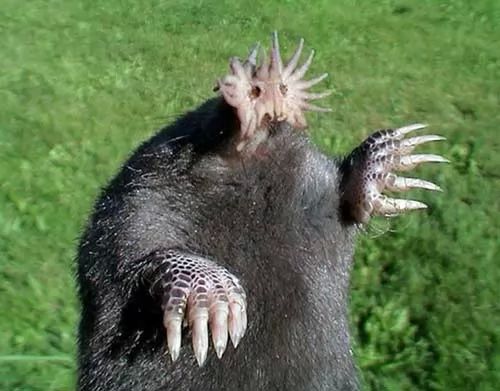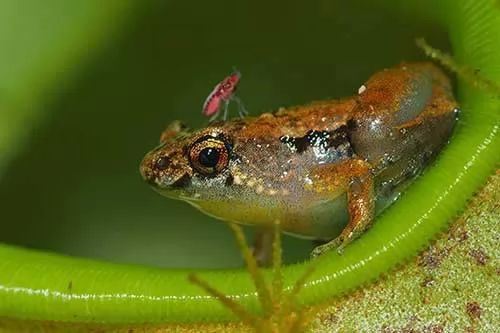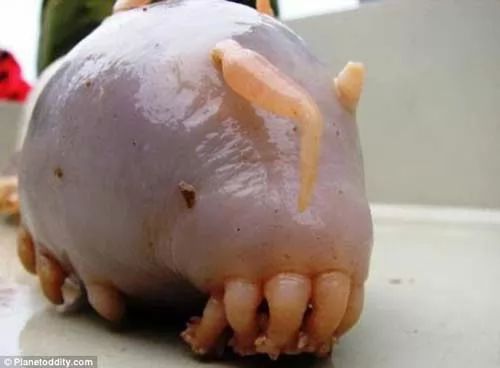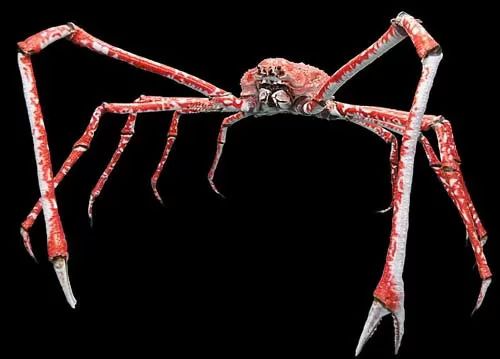There are literally millions of different kinds of creatures on Earth, and even now, despite all this advanced science, scientists are not sure how much we live in a world where there is a lot of biodiversity, and when thinking about animal life you might think of dogs, cats, horses, And other common animals. But have you ever wondered about some of the strangest animals on the planet? Of course you have not thought about this diverse world and some life forms that have evolved into a very specialized life. Here you will find some of the strangest animals in the world, We are May, like coming from space.
1. Star-nosed mole:
The strangest animals in the world
If you look at this creature from the side, you will find that the mole looks a bit strange, but if you look at it face to face, you can feel very astonished where many people see him ugly face as he has a strange nose and has 11 pairs of appendages on his amazing sniper , And these appendages contain more than 25,000 of the main sensory receptors of this creature, and scientists believe that there is nothing really ugly about the astrocyte mole, but it is just a different animal and a very nice object.
2. Frog tight nose:
The strangest animals in the world
This little frog may be surprising since it was discovered just four years ago in Borneo in 2010, when researchers discovered this little frog originally assumed that it was born, and since then, others have been found from it, and this little frog grows The frog has a snout of about the same length measuring about 18 millimeters, and I have a frog tight nose small round eyes and has no visible drum eye, and has a smooth skin on the dorsal surface comes reddish, short limbs.
3. The paper deer:
The strangest animals in the world
These deer look a little like children, and even the grown ones grow up to generally reach about 2.5 feet in height, usually weighing about 25 kg. This type of deer was discovered in 1997 by the living scientist Alan Rabinovich during a field study he was doing In this study, he examined the body of the paper-based gazelle. Initially, it was thought to be an organism of another type. After DNA analysis of this gazelle, it was discovered to be a new species. Local fishermen called it because its body could be completely wrapped in one large leaf.
4. Sponges Harp:
The strangest animals in the world
If you want to find something really strange, you have to look beyond what is in the ocean, looking at the mysterious depths that hide the species of very strange beings, and among these objects the harp string that looks a bit like candlesticks that sit at the bottom of the ocean and are characterized by appearance Classy .
5. Ice Fish:
The strangest animals in the world
Arctic ice lives around Antarctica. Surprisingly, this fish is able to adapt to unusually cold water. Instead of the blood flowing through the veins, this fish creates a natural antifreeze that keeps the antigen body temperature .
6. The sea pig:
The strangest animals in the world
The sea pig is very similar to the real pig, perhaps comes the similarity of the body flesh I have Monday, and in fact the sea pig is a kind of sea cucumber with two feet, but it has some fat, and hogs inhabit the seabed in all the oceans of the world, That's Antarctica, often traveling in large groups, sometimes hundreds.
7. Head rod thickness:
The strangest animals in the world
These fish are unusual where the male genital organ is located on the head, and female genitalia are also located on her head. This type of fish was discovered in 2009, and was performed in 2012, and these species were found in the depths of 5 to 5.3 meters, in the tidal channels in the Mekong Delta. In length, this type is about 25 millimeters and is characterized by a transparent white color.
8. Blue Bubble:
The strangest animals in the world
In fact, the blue bubble is a mascara, not a jellyfish, an animal that is always in a colony of organisms that work together as a team. This amazing organism is found in the Atlantic Ocean as well as in the Indian Ocean and the Pacific. The blue bubble has toxic claws that can be painful And sometimes lethal, despite its outward appearance. However, as we mentioned earlier, this organism is one of the molluscs, it is not like the multicellular jellyfish, we find that it is always a colonial object and can not survive independently as if it were an individual organism .
9. Japanese crab spider:
The strangest animals in the world
If you plan to hit one of them with a heart attack, the Japanese crab spider must be placed on its way. These creatures are peculiarly shaped. This spider has very long legs that can extend up to 12 feet (3.8 meters) and grow up to 40 centimeters long, The Japanese crab spider is different from other cancers in a number of ways. Its larvae may be very primitive, orange in color and white spots along the legs. In fact, these armored outer structures help In protecting it from large predators such as eavesdroppers , And despite the appearance of fierce and frightening but manageable and friendly too.
10. Ghee, sea sprayer:
The strangest animals in the world
This object may not be among the animals that raise our attention to some extent but wins in this competition where he got the title of one of the exotic animals, and gorillas known as sea sprayer is a marine invertebrates, and spends part of his life in the larvae stage where he can To swim around in the water like a lot of fish or any other portable animal, and we find that there is relatively short life in the sprayer of the sea where he can not eat at this stage, but waiting to settle and plant himself in a safe place first.
It seems that these strange creatures are not only wonderful but also very different, and I think that nothing presents the biodiversity of our planet better than our view of the species that we find strange or unfamiliar, all these creatures have found quite different outlets in nature but unfortunately , These species are lost rapidly each year, and the biodiversity of our planet is shrinking as a result of human influence. If we want these amazing species to continue to thrive, we need to actively work to protect the natural environment around us.











No comments:
Post a Comment